We Support Students’ Activities and Introduce Them to You
Rakugo Theater “Ochiba”
Japanese Comic Storytelling in a Spectacular Space
By New Architectural and Digital Technologies
Rakugo is a traditional Japanese form of comic storytelling that originated during the Warring States period (around 1467–1573). The style of rakugo theater that we are familiar with today, known as yose, was developed during the Edo period (1603–1867). rakugo Space Ochiba is an experimental project that aims to modernize the traditional yose theater with contemporary architecture. Their inaugural performance occurred at the Tokyo Node Lab* in Toranomon, Tokyo, on June 29, 2024.
Wataru Nakayama, a student in the Department of Socio-Cultural Environmental Studies, is the founder and coordinator of the project. Although rakugo is traditionally performed in vaudeville theater settings, where classical performing arts are generally staged, this project seeks to create an ochiba, a space to be immersed in rakugo stories anywhere, breaking away from the traditional closed spaces.
Nakayama focused on several aspects of rakugo, including kido (wicket), debayashi (music played as a comic storyteller comes onstage), kōza (the stage for rakugo), and sajiki (box seats), and reinterpreted them. He designed knockdown sets that are easy to assemble and convey, using digital technology to create and direct sounds to recreate an immersive feeling, the same as that in a theater.
"I was very impressed when I saw a comic storyteller talking animatedly, and the audience was laughing in the space we created. I felt that my direction was successful. Next, I want to take the space outside. I will design a space for people to relax in a city, even for a moment, with rakugo’s humor and carelessness,” Nakayama said to Sosei.
Soon the day will come when people will recognize rakugo as a new form of entertainment blended with traditional culture and cutting-edge technology.
Tokyo NODE LAB.
https://tokyonode.jp/lab/index.html
(Interview and text by Mayuko Araragi)
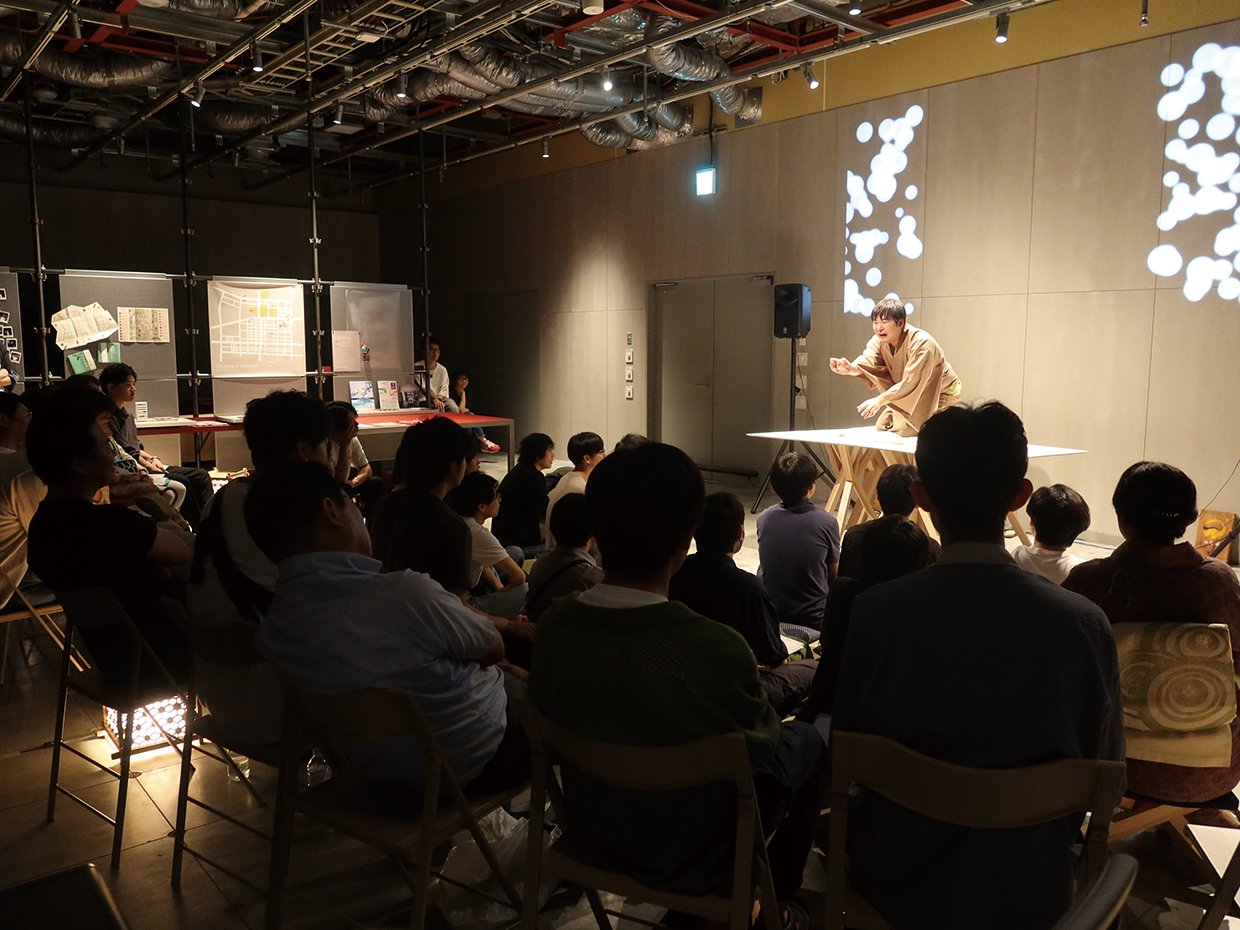
The storyteller is Enjiya Kenbo (Eizo Kamiunten) from a Rakugo circle at Waseda University.
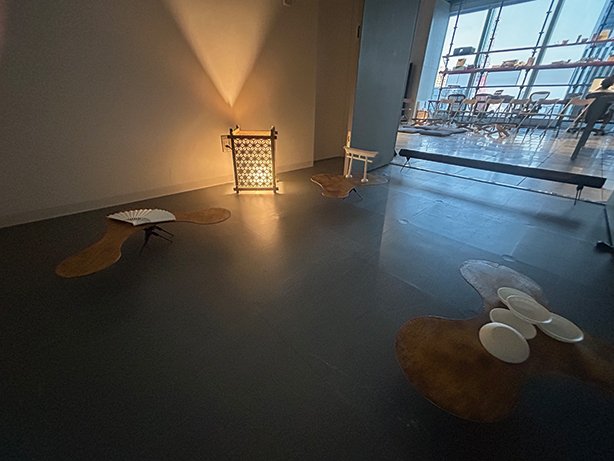
Kido (wicket): The bar on the far right is the border between the rakugo world and the normal world. People cross the bar and feel a change.
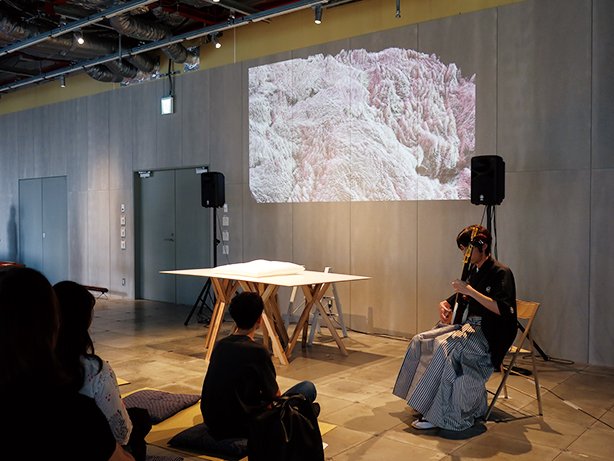
Debayashi (music) and byobu (folding screen): The debayashi was played by Tsugaru shamisen, and the byobu was projected in a point-cloud image.
The musician: Yuichiro Matsuura from the Tsugaru shamisen circle, “Mitsu domoe,” of Waseda University
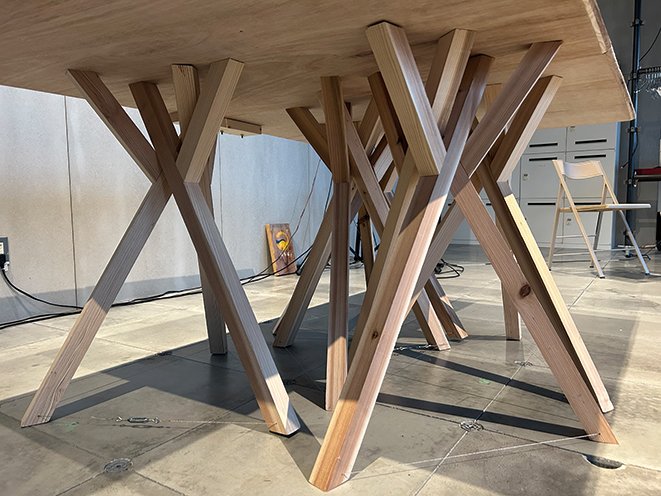
The platform as kōza: It is made of crossed Y-shaped timber units. To sustain the weight of a storyteller who talks with lots of movements, the timbers have wires around the bottoms. It was designed to be more stable because of the load. It becomes more stable under the load.

As an undergraduate student at Kyushu University, Nakayama attended the lecture series, “Architecture Plus Something,” by an architect, Kei Sasaki. Inspired by it, he began his project on space direction with his theme, “Architecture Plus rakugo.”
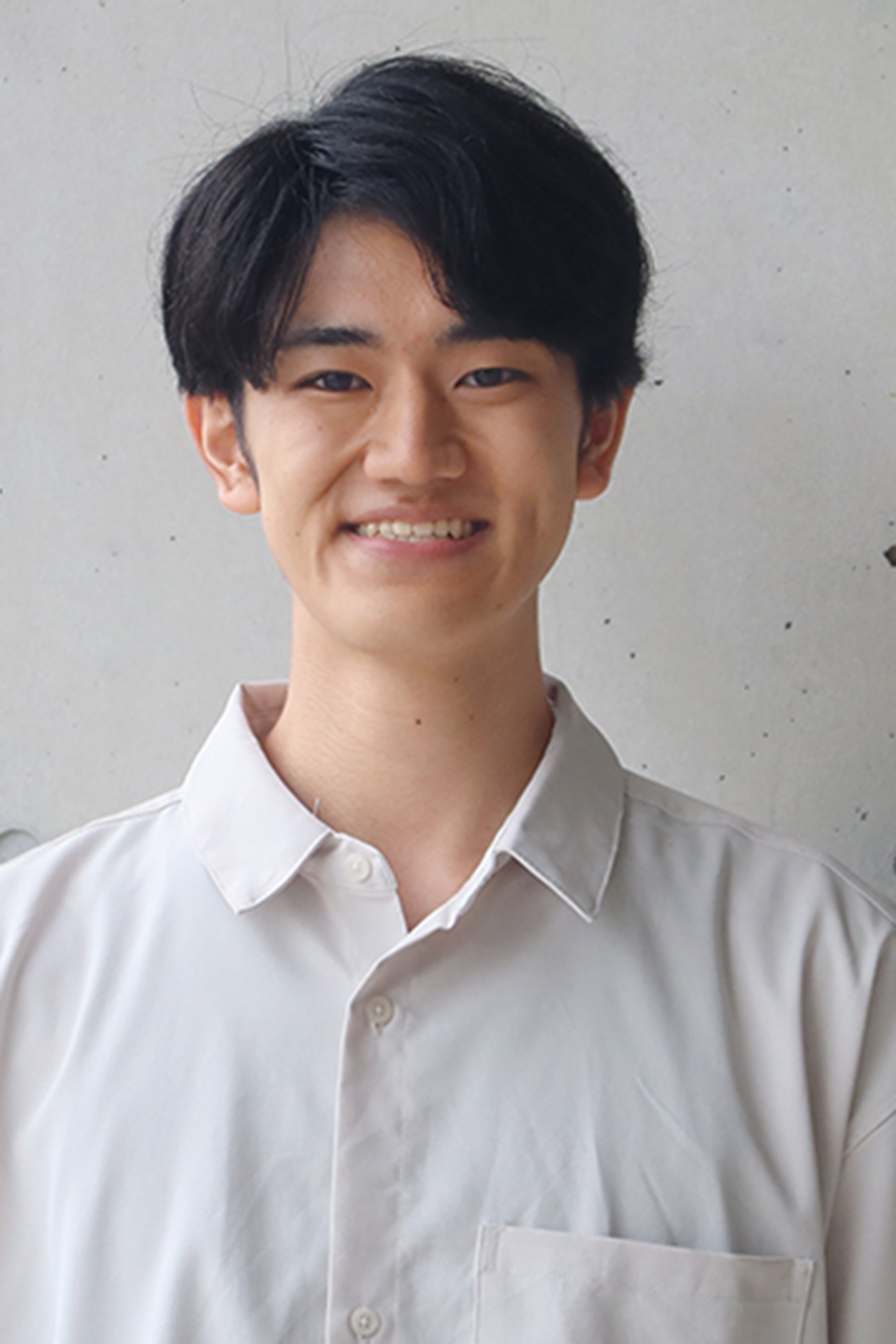
Wataru Nakayama
Second-year Master’s student in the Department of Socio-Cultural Environmental Studies
Kashiwa Campus Science Camp
https://ksc.edu.k.u-tokyo.ac.jp/
The academic year 2023 marked the 9th Science Camp, and 32 laboratories of the GSFS and its affiliated centers supported the event. Notably, 126 1st- and 2nd-year undergraduate students from the University of Tokyo participated in the event and experienced hands-on training for four days between February and March. We received many positive feedback from the students.
Student Voices:
“I experienced the atmosphere of where research is actually conducted,”
“I learned a broad range of concepts from the fundamentals to background knowledge,”
“The event motivated me to pursue graduate studies.”
Faculty voices:
“Students proactively and creatively participated in the program,”
“I was satisfied with their performance as an educator.”
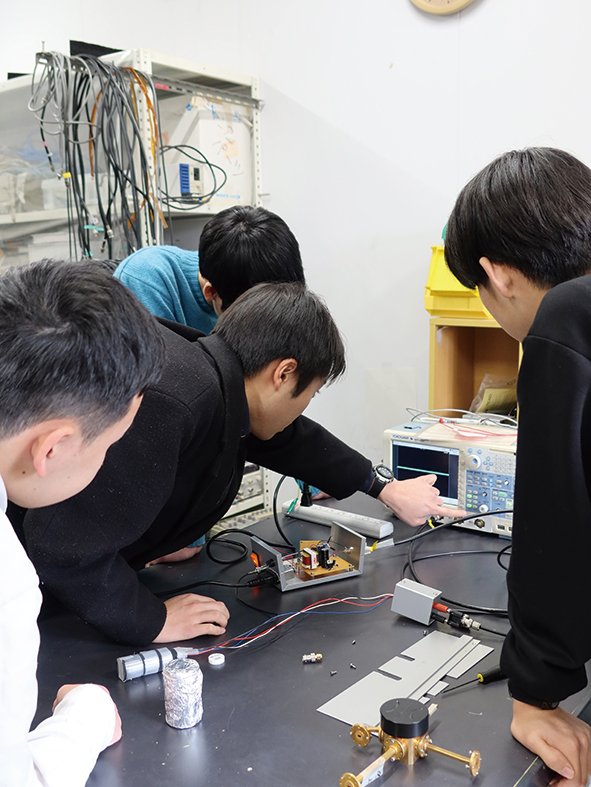
The “Measure Nuclear Fusion Plasma with Electromagnetic Waves” Program at Prof. Tsujii’s laboratory
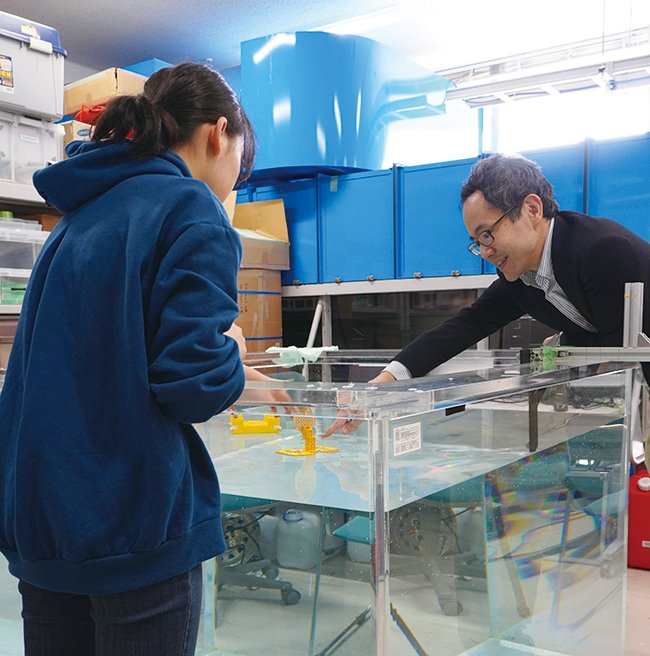
The “Design and Movement Measurement of Floating Bodies” Program at Prof. Hirabayashi’s laboratory
vol.44
- Cover
- The Potentials of Materials Science
- A Turning Point of Fusion Energy Research: Increasing Commercial Ventures for Practical Application
- Pioneering New Life Science with Parasitology and Bioinformatics
- For Acquisition and Proper Use of Water Environment Data
- GSFS Front Runners: Interview with an entrepreneur
- Voices from International Students
- On Campus/Off Campus
- Event & Topics
- Awards
- Information
- Relay Essay
